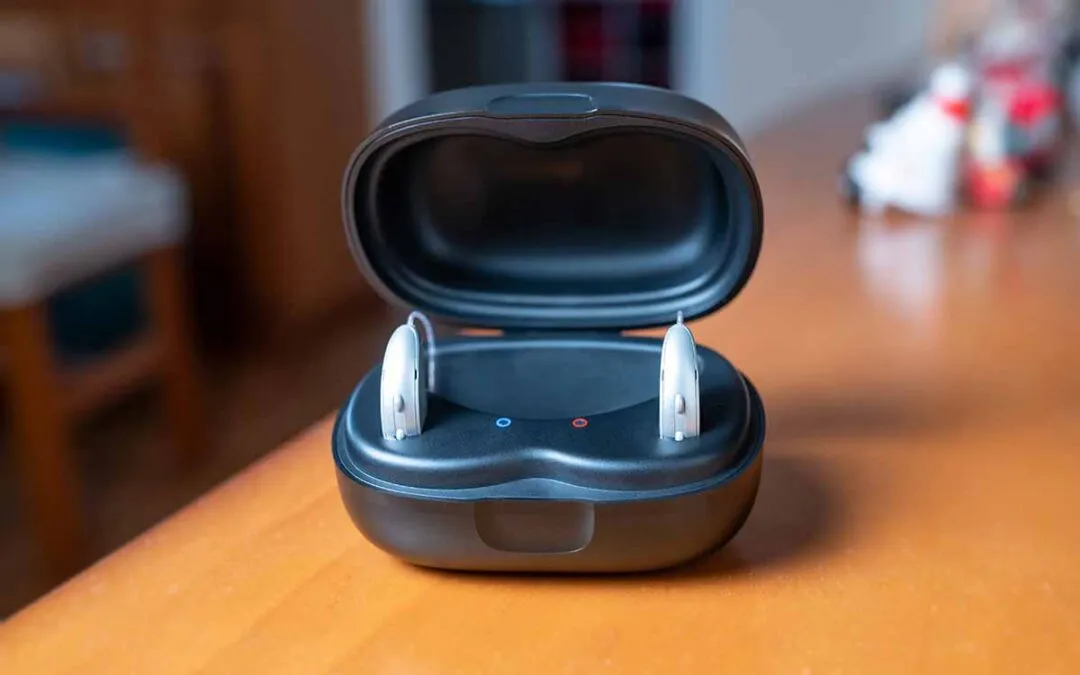6 Ways to Maximize the Life and Performance of Your Rechargeable Hearing Aids
Posted on April 26, 2025
Rechargeable Hearing Aids
Today, “recharge and reuse” has become the standard in hearing technology. Disposable hearing aid batteries are quickly becoming a thing of the past. In fact, in the United States, approximately 80% of hearing aids purchased are now rechargeable, and this number continues to rise as more users discover the convenience and benefits of rechargeable options. Leading manufacturers such as Oticon, Signia, and Phonak all offer a wide range of rechargeable devices, making it easier than ever to find a model and style that fits your lifestyle and hearing needs.
Pros and Cons of Rechargeable Hearing Aids
Like any technology, rechargeable hearing aids come with their own set of advantages and limitations.
Advantages:
- Modern lithium-ion rechargeable batteries can deliver up to 30 hours of usage on a single charge.
- These batteries typically last up to 5 years before needing replacement.
- Rechargeable batteries are securely encased inside the hearing aid, reducing the risk of accidental ingestion by children or pets.
- They produce significantly less environmental waste compared to disposable batteries, assuming proper disposal practices are followed.
- Individuals with dexterity challenges often find rechargeable devices easier to manage, eliminating the need for frequent, small battery changes.
Disadvantages:
- If you forget to charge your hearing aids and don’t have a portable charging case, you can’t simply swap in fresh batteries.
- Replacing a rechargeable battery usually requires a visit to an audiology clinic.
- Although highly reliable, concerns about lithium-ion battery overheating remain among some users and hearing professionals.
According to a report from the Hearing Industries Association, user satisfaction rates for rechargeable hearing aids are above 85%, highlighting the overall reliability and convenience of modern rechargeable models.
6 Essential Tips to Get the Most Out of Your Rechargeable Hearing Aids
If you’ve invested in rechargeable hearing aids, taking proper care of them can extend battery life, maintain performance, and save you costly repairs down the line. Here’s how to optimize your experience:
1. Use the Manufacturer-Approved Charger
Avoid the temptation of cheaper alternatives. Chargers from non-approved sources, like budget retailers or unauthorized online shops, may not regulate power properly and could damage your batteries. Always use the charger provided by your hearing aid manufacturer. It is specially engineered to match your device’s specifications and ensures safe, consistent charging.
2. Establish a Routine: Charge Overnight
Place your charger near your bedside, by your favorite chair, in the kitchen (you get the idea) and make it a habit to dock your hearing aids each night before sleeping. This ensures you wake up to a fully powered device, ready to keep up with your daily activities without interruptions.
3. Never Place Aids in an Unplugged Charger
Placing your hearing aids into a charger that’s not plugged in can unintentionally drain battery power. If the charger isn’t active, the aids can switch on while docked, leading to an unintentional depletion of battery life. Always make sure your charger is connected to power when docking your devices.
4. Keep Earwax at Bay
Earwax is one of the most common causes of hearing aid malfunctions. It can block microphones, clog receivers, and interfere with battery contacts. Clean your hearing aids daily with a soft cloth and consider using a dedicated hearing aid cleaning kit to gently remove wax buildup without damaging sensitive components.
5. Protect from Moisture
Water and electronics are never a good mix. Remove your hearing aids before showering, swimming, or entering humid environments like saunas. When cleaning your aids, use only a dry cloth or brush—never submerge them or use cleaning sprays or alcohol-based products, which can corrode components.
6. Avoid Extreme Temperatures
Rechargeable hearing aids are sensitive to temperature extremes. Prolonged exposure to high heat (over 90°F) can damage internal batteries, while extreme cold (below 50°F) can impair battery performance and shorten operational life. Try to keep your devices within this safe temperature range whenever possible.
Rechargeable hearing aids offer unprecedented convenience, sustainability, and performance for millions of users worldwide. By following these care tips, you can extend the life of your devices, maintain peak performance, and ensure that your investment continues to deliver clear, powerful sound each and every day.
Looking for more detailed care advice or troubleshooting help? BergerHenry ENT audiologists can guide you on best practices to maximize your hearing aids’ lifespan and efficiency.